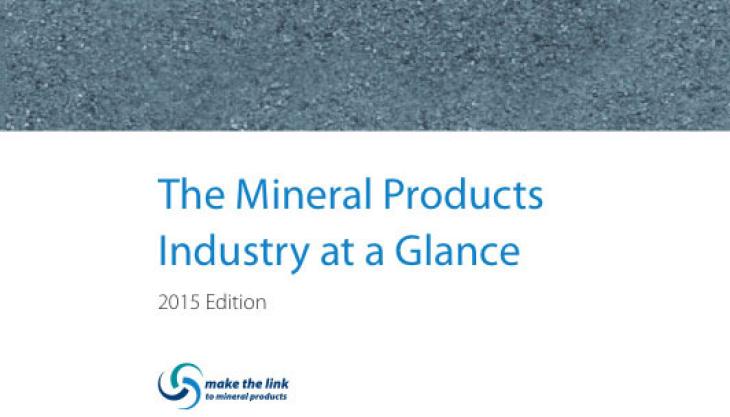Mineral products industry: Facts at a Glance

New MPA report highlights significance of minerals and mineral products to the UK economy
AT its 6th Members’ General Assembly held yesterday, Wednesday 10 June, the MPA released the third edition of its ‘Facts at a Glance’ publication, which offers a comprehensive insight into the essential contribution the mineral products industry makes to the economy and the UK in general, and some of the challenges it faces.
The headline figures at a glance are:
- 300 million tonnes – GB production of aggregates and manufactured mineral products
- £21 billion – mineral products industry’s annual turnover
- £6.7 billion – total gross value added (GVA)
- £445 billion – turnover of industries the mineral products industry supplies
- £135 billion – value of construction, the main customer for mineral products
- 80,000 – number of people directly employed in the mineral products industry
- 3.3 million – jobs supported through mineral products supply chain.
Other headline figures from the document include:
- Each worker in the mineral products industry produced, on average, £81,000 in value added in 2013, 1.6 times more than the national average
- Materials in the MPA’s scope accounted for 68% of the total UK production of minerals in 2013 (including crude oil/natural gas/coal)
- In 2014, 111 million tonnes of aggregates were produced in England, 25 million tonnes in Scotland, 20 million tonnes in Northern Ireland and 14 million tonnes in Wales
- In 2014, crushed rock accounted for 45% of all GB aggregate sales, recycling 29% and sand and gravel 27%
- The annual cost of the aggregates levy was equivalent to 17% of the industry’s GVA in 2013
- The total cost of climate change and energy measures is expected to rise from an equivalent of 8% of the GVA of the cement industry in 2014, to 46% by 2020
- In 2013, the use of aggregates and cement per capita in GB was 32% and 48% respectively, below the European average.
Nigel Jackson, chief executive of the MPA, said: ‘Our third edition comes with a crystal clear message: the more we look at the numbers, the more significant our industry’s contribution to the economy and the UK becomes. The mineral products industry is absolutely essential to both the built and natural environment, and our quality of life.
‘This document is part of our ‘Make the Link’ toolbox; ‘making the link’ between our quarries, plants and factories, and our roads, hospitals, schools, housing and energy infrastructure, and the vital mineral products they rely on.
‘This review is a very valuable source of information on the mineral products industry, documenting the changing patterns in the way we produce and consume our minerals and the manufactured products derived from them. It provides a detailed analysis of the latest data for each product and highlights the significant contribution our industry makes to the UK economy.’
Mr Jackson continued: ‘It is an evidence-based world and no evidence can mean little influence – and there is not much that is more powerful evidence than good data, well presented. The facts in this document are key in revealing our industry’s impact and helping to inform and influence policy on mineral resources and their use as essential products.’
The data in MPA’s ‘Facts at a Glance’ publication are presented simply and succinctly using easy-to-interpret graphs. Using this visual approach, the document highlights the industry’s economic significance, not only through how much the industry generates directly in terms of value added and employment, but also how it supports other vital industries such as construction and manufacturing.
In addition, the document provides product information, such as sales volumes and where production is concentrated; analyses the issue of maintaining long-term aggregate supply, by looking at permitted reserves and replenishment rates; sets out the cumulative burden of taxation and regulation on the industry; and examines the industry’s contribution to sustainability using data on the share of recycled and secondary materials in total aggregate sales, resource efficiency, carbon dioxide emission reductions and biodiversity delivery.
To download a copy of the latest ‘Facts at a Glance’ document, click here.








